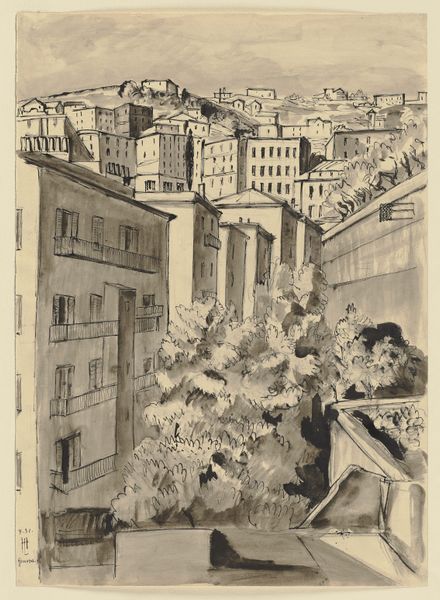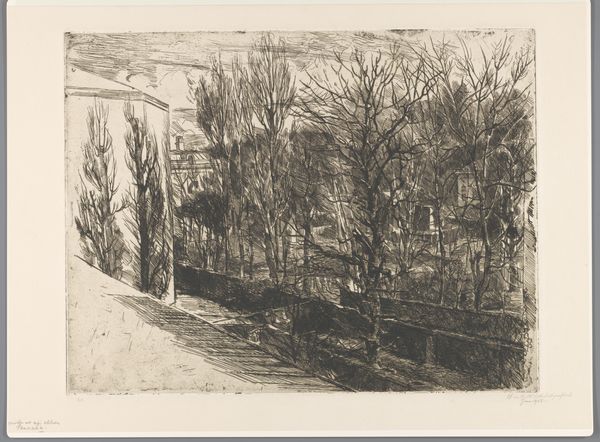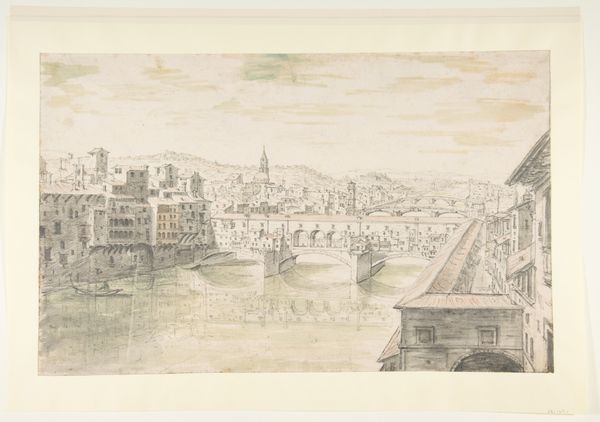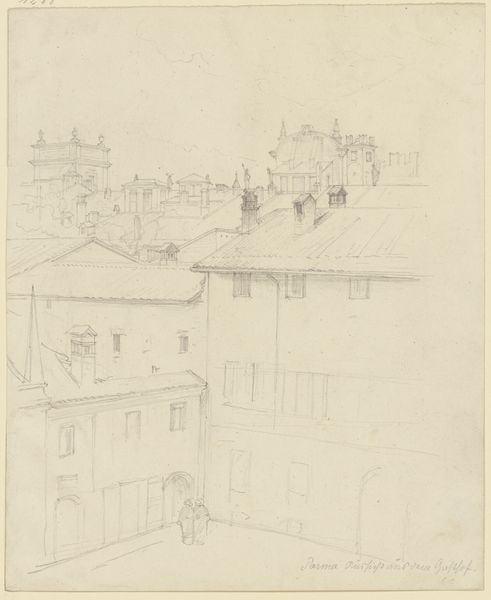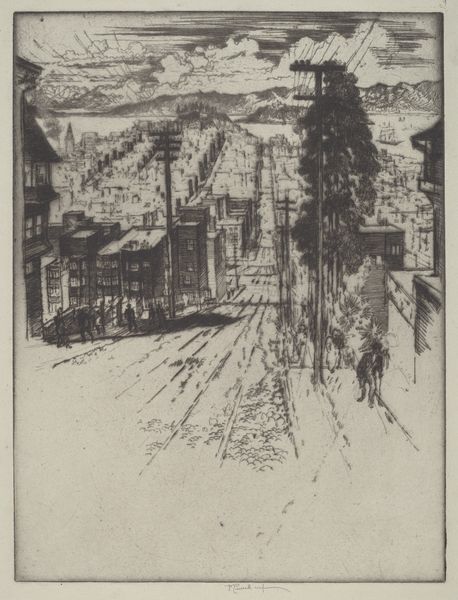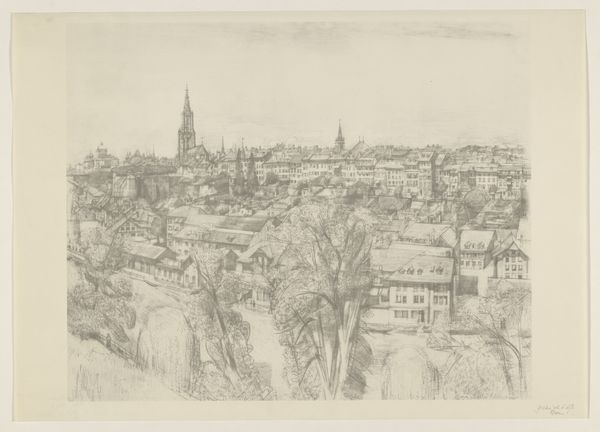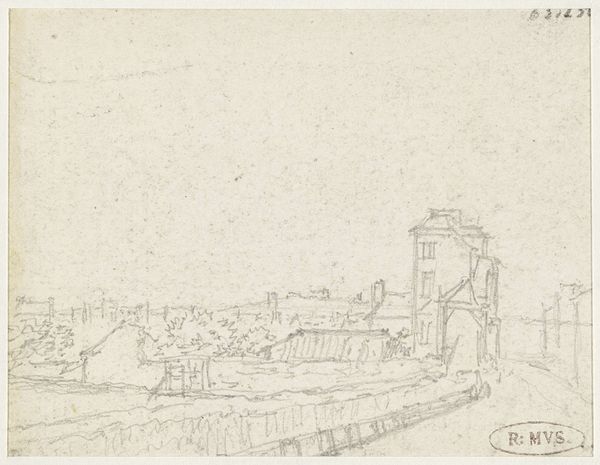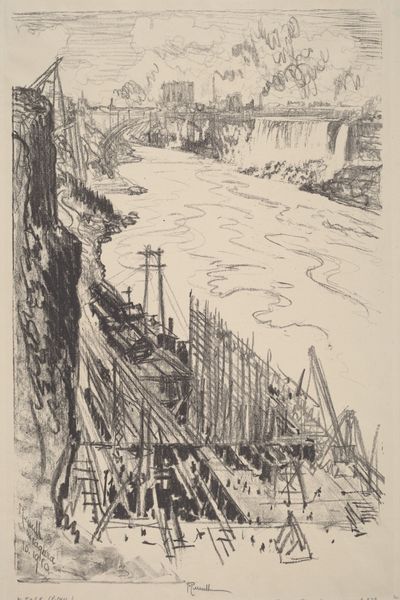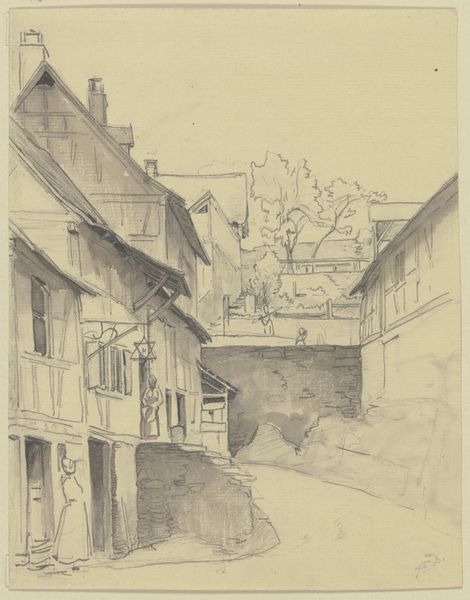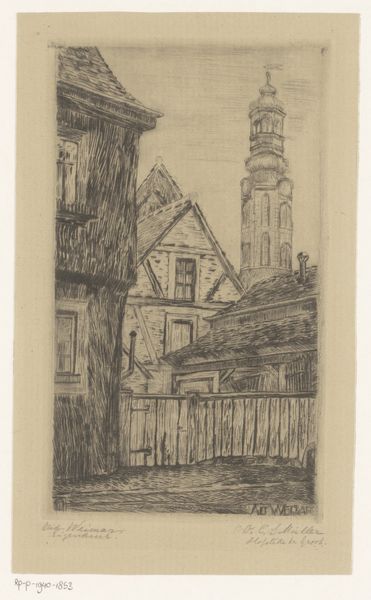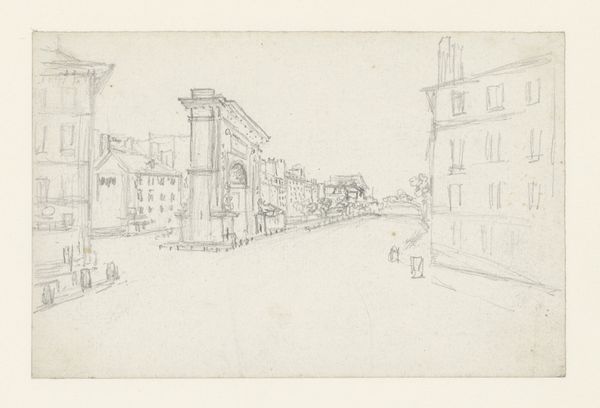
drawing, paper, ink
#
drawing
#
ink drawing
#
landscape
#
paper
#
ink
#
cityscape
Copyright: Public Domain
Curator: Hermann Lismann created this cityscape, titled "Blick vom Castelletto auf Genua," or "View from the Castelletto on Genoa," in 1931, using ink on paper. Editor: It has a somber feel, almost haunting, despite being a city view. The monochrome ink evokes a sense of timelessness, yet also something unfinished, like a memory fading. Curator: Interesting take! For me, the application of ink wash reveals so much about Lismann’s process. Note the gradations of tone, building form, and creating depth within a restricted palette. The artist's control of the medium brings such nuance to the composition. The paper support itself is an unsung hero, allowing the ink to bleed slightly and create softer edges. Editor: I can definitely see your point regarding the artist’s technical skill and medium. However, beyond its formal qualities, it begs questions about urban expansion and industrialization in Italy at the time, which were often intertwined with social inequalities. How does this vista frame Genoa’s place in the context of those issues? Curator: Good point. One might consider the vista itself a luxury; a high-angle view like this would likely have been reserved for those with social and economic capital, offering an outlook *upon* the workers in the lower districts. This contrasts the experience of laborers who may have contributed directly to the industrialized cityscape represented on the horizon line of the piece. Editor: Right! What we see reflected is this intersectionality: landscape not simply as topography, but as the social, political, and class dimensions rendered by Lismann's very particular gaze. His viewpoint wasn't neutral. Curator: The very act of using ink, a relatively accessible medium, challenges traditional oil painting which dominated art production at the time. Lismann's decision underscores the possibility that anyone, regardless of social standing, could potentially engage with and interpret their surroundings through drawing. Editor: That’s an intriguing angle—reminding us of art’s capacity for empowerment. Ultimately, this "view" represents far more than just physical space; it encompasses ideologies, historical contexts, and social realities, prompting continuous reflection about how we perceive and represent the worlds we inhabit. Curator: Exactly! These works from different eras also showcase unique skillsets.
Comments
No comments
Be the first to comment and join the conversation on the ultimate creative platform.


